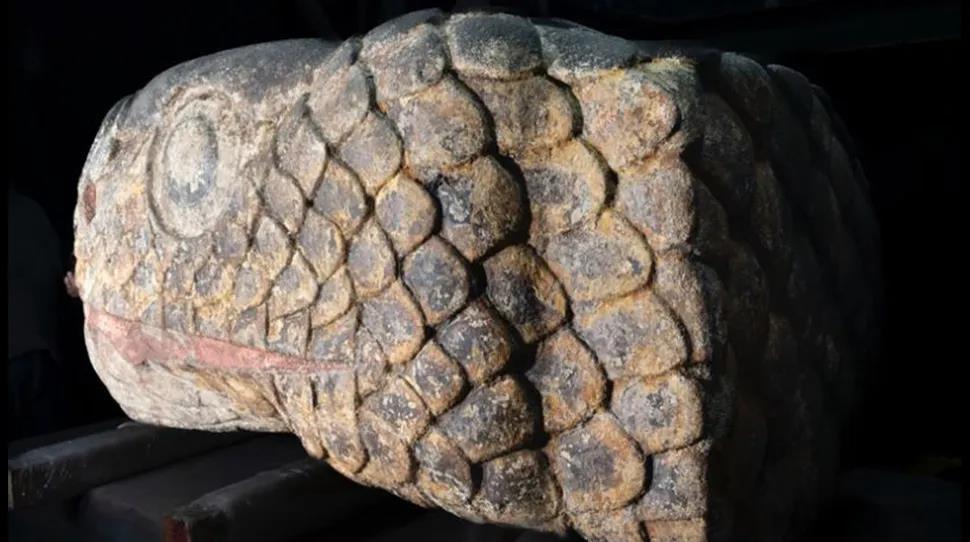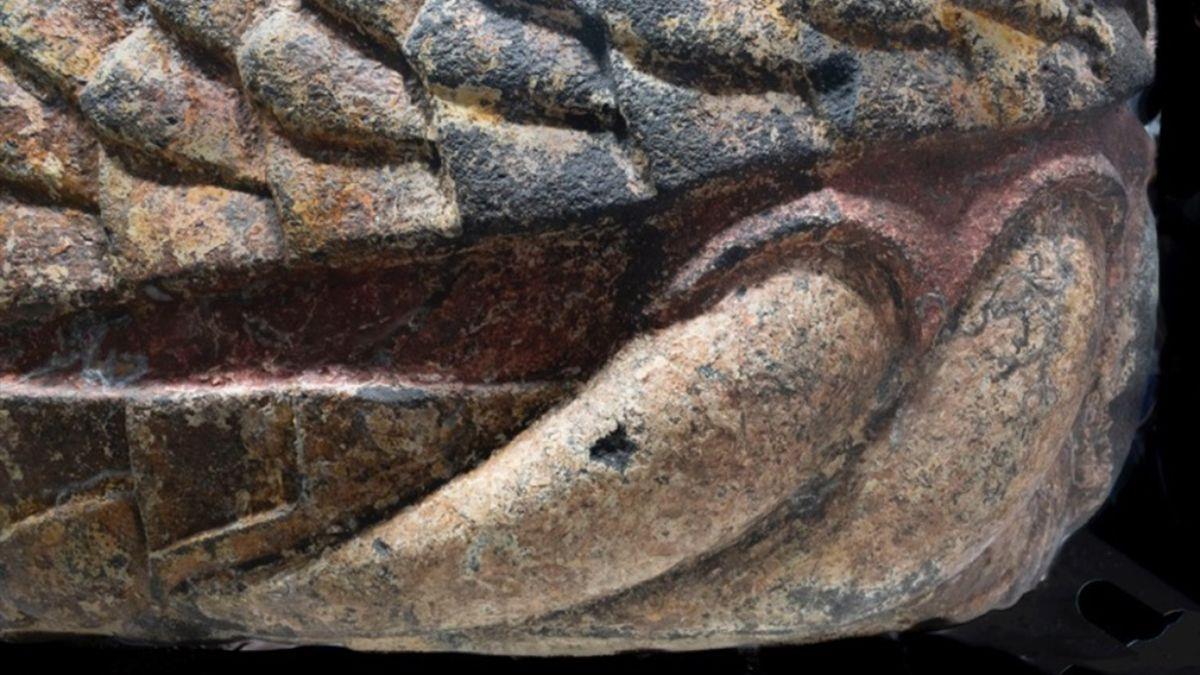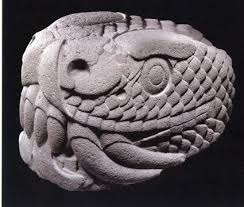According to Live Science, the treasure is the head of a giant stone snake, which was excavated and studied by scientists from the Mexican National Institute of Anthropology and History (INAH).

The school where the earthquake occurred in the capital Mexico City, which has revealed many other ruins of the famous Aztec civilization in Central America, is famous for its unique architecture and sculptures.

The 1.3 ton snake head was crafted by the Aztecs – Photo: INAH
In this area, the Aztecs built temples, pyramids… to honor gods, including Quetzalcoatl, the god often depicted as a snake. However, archaeologists still cannot confirm whether this giant snake head depicts the god Quetzalcoatl or not.

Ancient pigments are still quite well preserved on Aztec treasures – Photo: INAH
According to INAH, the delicately carved snake head is up to 1.8 m long, 0.85 m wide, and 1 m high. It has a mass of about 1.3 tons and is painted in many colors.
Some ancient pigments including red, blue, black and white remained intact after 500 years of being buried. It is estimated that up to 80% of the surface still preserves its color.

To preserve this rare intact treasure, INAH archaeologists had to use a crane to lift the stone block straight out of the ground and build a special chamber to help the work gradually reduce humidity, thereby drying without drying. damage the color.
Archaeologist Erika Robles Cortés from INAH said the preservation of color is especially important in this discovery, because it can help reveal how ancient people stabilized color to use it in large-scale works. Needs to be weather resistant.
This Aztec treasure has helped archaeologists visualize pre-Hispanic art from a different perspective.






